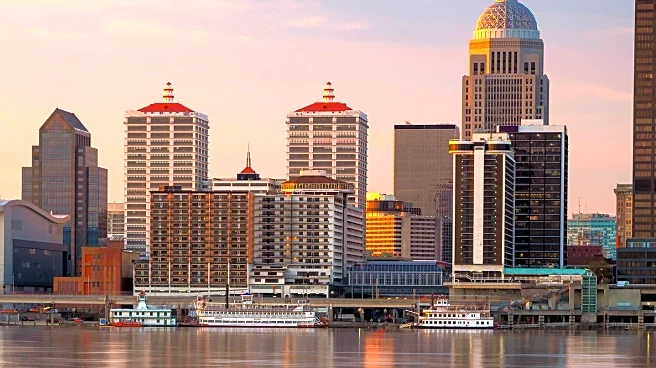What's Happening?
Los Angeles International Airport (LAX) has experienced a decline in global airport rankings, dropping from the third busiest airport in the world in 2019 to the 11th spot. This decline is attributed to several factors, including a decrease in passenger counts since the pandemic and the airport's lack of a major airline hub. John Ackerman, CEO of Los Angeles World Airports (LAWA), is overseeing a $30-billion overhaul of LAX in preparation for the 2028 Olympics and Paralympics. The renovation includes the construction of the Automated People Mover, a 2.25-mile elevated train designed to improve traffic flow and connect the airport to the Metro Transit Center. Despite setbacks and delays, Ackerman remains optimistic about transforming LAX into a world-class facility.
Why It's Important?
The transformation of LAX is crucial for enhancing the airport's infrastructure and improving passenger satisfaction. As one of the busiest airports in the U.S., LAX's ability to efficiently handle increased traffic during major events like the 2028 Olympics is vital for the region's economy and global reputation. The overhaul aims to address longstanding issues such as traffic congestion and outdated facilities, potentially boosting tourism and business travel. The success of this project could set a precedent for other airports facing similar challenges, highlighting the importance of infrastructure investment in maintaining competitive global rankings.
What's Next?
The completion of the Automated People Mover is anticipated by the 2026 World Cup, with contingency plans in place should further delays occur. The broader renovation project is expected to continue through 2030, with plans to revamp terminals and improve traffic flow. Ackerman and LAWA officials are focused on ensuring the airport is ready to welcome international visitors with improved facilities and services. The ongoing construction and updates will require careful coordination to minimize disruptions for travelers and local communities.
Beyond the Headlines
The renovation of LAX not only addresses immediate infrastructure needs but also reflects broader trends in airport management and urban planning. The integration of public transit options and the emphasis on creating a 'Los Angeles experience' within the airport highlight a shift towards more sustainable and culturally relevant airport designs. This approach may influence future airport projects globally, as cities seek to balance functionality with local identity.










